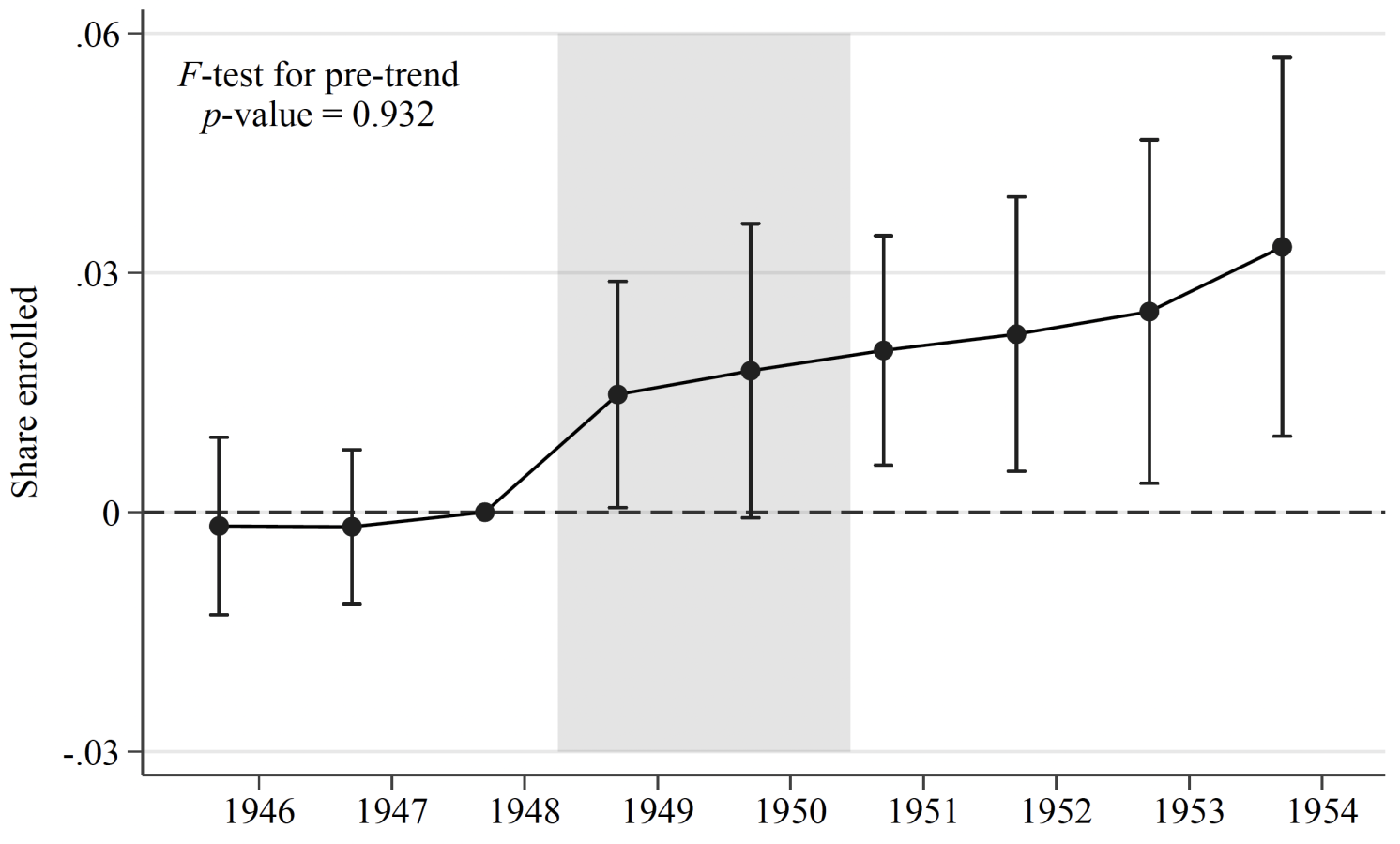Yves here. While the AMA did have a big role in stopping the implementation of some version of public health care, they were far from the only bad actor. It would be unfortunate if this description of the AMA’s successful tactics were to obscure the role of US labor unions. They too opposed government-provided health care. They wanted it to be a key contract bennie so as to justify the need for union negotiations and therefore union dues. Mind you, there are many ways unions help workers, as we see from unions overseas not falling over in droves abroad in Europe after those countries implemented their government-paid regimes. So the union conduct was particularly disgraceful since it benefited the leadership while not helping the rank and file and hurting broad swathes of Americans.
And while doctors are getting a comeuppance via the horrible crapification of American medicine, which is being visited upon them as well as patients, it’s not as if the current generation of doctors were part of the anti-government-medicine campaign. This is the professional version of the children paying for the sins of the fathers.
By Marcella Alsan, Angelopoulos Professor of Public Policy Harvard Kennedy School; Yousra Neberai, Graduate student in Public Policy Harvard University; and Xingyou Ye, PhD Student Princeton University. Originally published at VoxEU
The US healthcare system relies on a heavily subsidised and lightly regulated private sector, and despite living in the world’s wealthiest country, millions of Americans remain uninsured, underinsured, or unsure of their coverage. This column examines the rise of private health insurance after WWII, when the American Medical Association – an interest group representing physicians – financed a nationwide campaign against National Health Insurance. Directed by the country’s first political public relations firm, the campaign used mass advertising to associate NHI with socialism and private insurance with the ‘American Way’.
The Sustainable Development Goals (SDGs) devised by the UN have advanced the target of achieving universal health coverage (UHC) for all countries by 2030 (Eozenou et al. 2023). This goal has already been reached by most high-income countries, but a notable exception is the US. Despite living in the wealthiest country in the world, millions of Americans remain uninsured, underinsured, or unsure of their coverage (Blumenthal and Collins 2022, Scott 2023a). Medical debt continues to be the leading cause of personal bankruptcy, and US performance on several key health outcomes is consistently below that of peer nations (Schneider et al. 2021, Kluender et al. 2021, Papanicolas et al. 2018). Recently, prominent health economists have pointed to the US healthcare system, with its reliance on a heavily subsidised, lightly regulated private sector, as an integral part of the problem (Case and Deaton 2020, Einav and Finkelstein 2023).
In a recent paper (Alsan et al. 2024), we step back from this current debate and seek to understand how the US developed its anomalous healthcare system. Typical explanations include a history of individualistic culture, union bargaining, inflationary pressure, or favourable tax treatment for employer-sponsored health insurance (Scott 2023b). We investigate another potential contributing factor: a large-scale post-WWII marketing campaign funded by the interest group representing physicians – the American Medical Association (AMA) – in coordination with other industries. The campaign was managed by the world’s first political public relations firm, Whitaker and Baxter’s (WB) Campaigns Inc. Although the campaign has been discussed previously – most notably in a New Yorker profile of Whitaker and Baxter (Lepore 2012) – to our knowledge, our paper provides the first rigorous analysis of whether and to what extent the interest-group financed campaign, which relied heavily on the indirect lobbying of voters, shaped the health insurance landscape during a critical juncture.
The campaign came about quickly in response to what the AMA described as an “Armageddon moment”. The reason for the AMA’s alarm was manifold: first, events abroad – notably, the introduction of the National Health Service (NHS) in the UK – provided an example of state-sponsored healthcare from a country which shared a common language and legal tradition. Second, the shocking 1948 election of Harry Truman brought a strong backer of national health insurance into the White House alongside a commanding Democratic majority in Congress – guaranteeing the topic would be on the legislative agenda. Third, Americans were highly in favour of national insurance and a leading rationale was purportedly a concern for those less fortunate.
The AMA-WB campaign had two key components. First, they used mass advertising to associate NHI with socialism, while the private (or voluntary) insurance option was described as the “American Way”. These advertising efforts of the AMA were complemented by tie-in advertising from other industries fearing a return to war-time price controls. In addition, the strategy called on AMA doctors to discuss private health insurance with their patients and to distribute pamphlets echoing the individualistic advertising message (see Figure 1). Through local and state medical organizations, physicians looking to defray medical costs had organised their own insurance product, which came to be known as Blue Shield, and they were eager for enrolees. All told, approximately $250 million (in current terms) was spent to sway voters, an unprecedented amount for the time. Doctors were also instructed to use their prestige to urge local civic organisations to pass resolutions against national health insurance.
Figure 1 Campaign pamphlets
Notes: Figure plots two examples of pamphlets distributed by AMA-affiliated physicians during the campaign.
Source: Whitaker and Baxter Campaigns, Inc. archives.
Using several newly digitised data sources – including archival information from Campaigns Inc., digitised medical directories from the AMA, hospital directories from the American Hospital Association (AHA), invoices from the advertising firm Lockwood-Shackelford, and newspaper directories – we reconstruct the AMA-WB campaign intensity. The strategy outlined in campaign documents did not target specific places since it needed to react quickly, and modern statistical techniques of market analysis had not yet been developed. Furthermore, the market for medical insurance was far from saturated given that it was a new product. Instead, Campaigns Inc. relied on existing relationships and resources: tapping an advertising company it had used for years and pushing private insurance sales through the AMA membership. Empirically, we find that, conditional on factors that could plausibly influence demand for the private health insurance product – such as income, unions, and hospitals – campaign exposure is not correlated with the pre-existing (low) level of private medical insurance. Our primary outcomes of interest are enrolment in private health insurance, which we digitised from newly discovered Blue Shield reports, as well as public opinion data from Gallup Polls. Our analysis ends in 1954, when the federal government categorised payments for health insurance as tax-exempt, and corporate entities began to compete vigorously with Blue Shield.
We find that a one standard deviation increase in AMA-WB campaign exposure explains 20% of the increase in private health insurance enrolment during this period (Figure 2), and a similar decline in public opinion support for legislation enacting national health insurance. The results on public opinion are strikingly similar across a broad array of individual characteristics – however, respondents who had voted Republican in a prior election appear more influenced by the campaign, perhaps indicating the ideological framing appealed more to members of that party. We also find suggestive evidence that the campaign altered the narrative for how legislators described proposed health insurance legislation, using descriptors such as “compulsory” as opposed to “national” in text taken from the Congressional Record. Echoes of the campaign can also be detected in the phrasing of Gallup polling questions until questions on national health insurance ceased being asked as the issue moved off the legislative agenda. Taken together, the findings provide evidence for an underappreciated contributing factor as to why the US developed its unique and complex healthcare landscape. Although a historical paper, these findings may take on new significance given recent evidence on the importance of health insurance for improving labour productivity, reducing health inequality, and decreasing mortality (Baten et al. 2023, Del Valle 2015, Miller et al. 2021, Goldin et al. 2021).
Figure 2 Effect of campaign on private health insurance enrolment

Notes: Figure plots event study coefficients of campaign exposure on private health insurance enrolment between 1946 and 1954. See Alsan et al. (2024) for further details.
Yet, why didn’t the US change course in later years? Our paper cannot easily tackle persistence empirically given the data limitations, but we offer several reasons for why the case for national health insurance was substantially weakened after the AMA-WB campaign. First, as middle-class Americans gained private coverage for themselves and eventually their dependents, the public option became less personally useful to many voters. Indeed, this was the explicit intent of offering a private option to begin with, according to campaign documents. Second, for-profit insurance firms increasingly entered the healthcare landscape: alongside pharmaceutical companies, hospitals, and specialist physicians, these groups continue to financially gain from and are a barrier to deviating from the status quo (Acemoglu et al. 2021). Third, the ideological argument that state involvement in healthcare invariably leads to socialism is still commonplace in the US – whenever reforms are proposed, the opposition’s response often explicitly refers to fears of socialism (see for example Gruber 2011). In other words, the narrative developed and promoted by the AMA-WB campaign remains firmly entrenched in US policy debates, with consequences for the nation’s health and the stability of insurance markets (Krugman 2021, Bursztyn et al. 2020).
See original post for references


